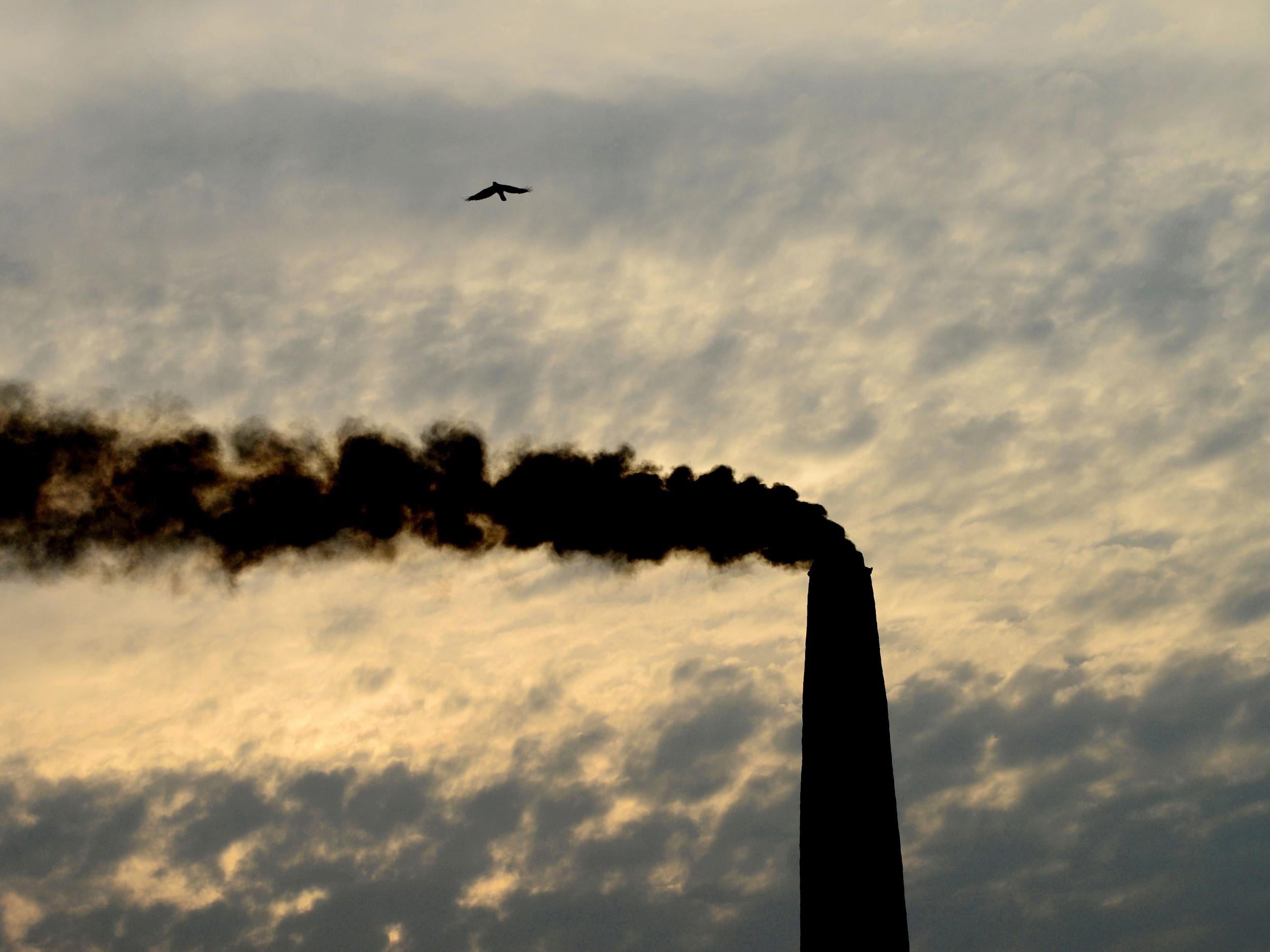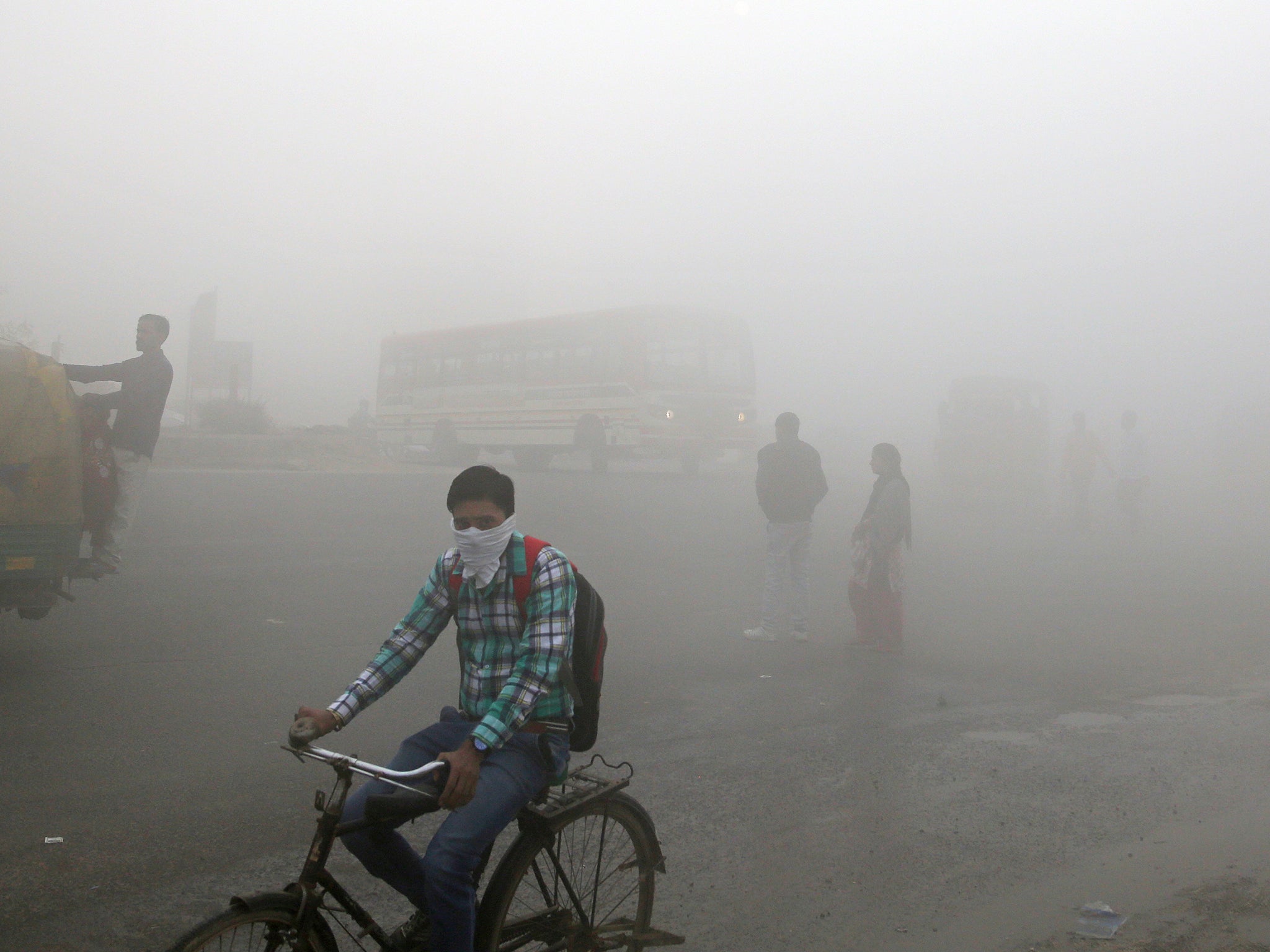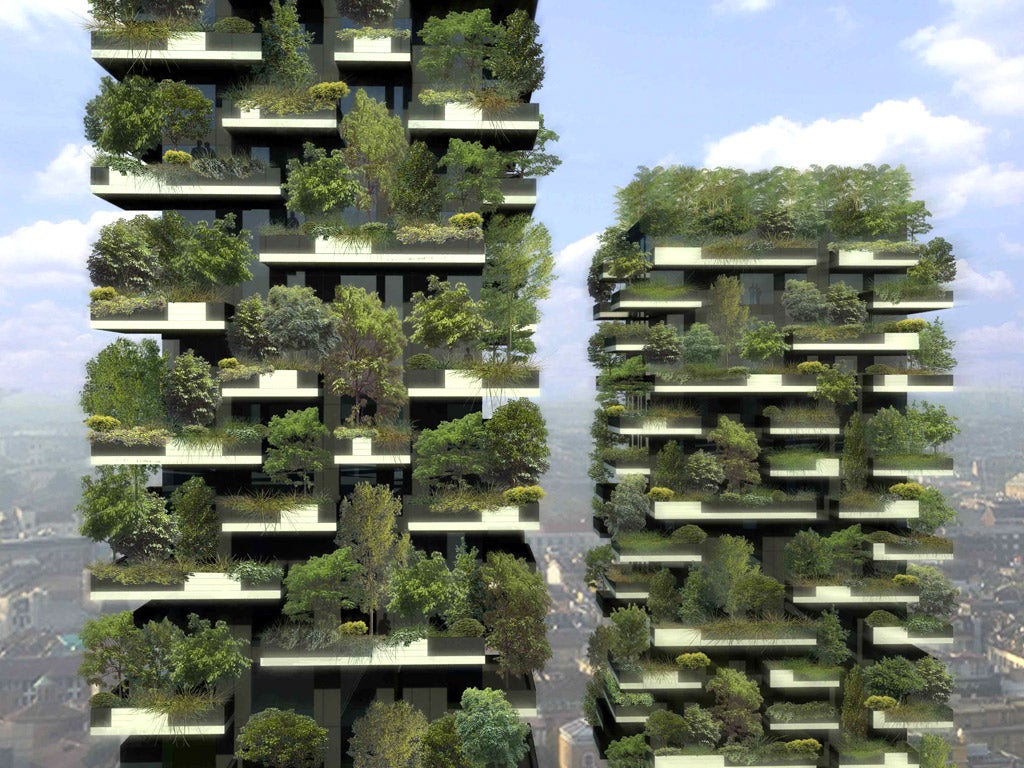Radical solutions to the air pollution crisis from around the world
Ten years after the introduction of low-emissions zones in London, are newer, more dynamic solutions required to deal with our dirty air?

Your support helps us to tell the story
From reproductive rights to climate change to Big Tech, The Independent is on the ground when the story is developing. Whether it's investigating the financials of Elon Musk's pro-Trump PAC or producing our latest documentary, 'The A Word', which shines a light on the American women fighting for reproductive rights, we know how important it is to parse out the facts from the messaging.
At such a critical moment in US history, we need reporters on the ground. Your donation allows us to keep sending journalists to speak to both sides of the story.
The Independent is trusted by Americans across the entire political spectrum. And unlike many other quality news outlets, we choose not to lock Americans out of our reporting and analysis with paywalls. We believe quality journalism should be available to everyone, paid for by those who can afford it.
Your support makes all the difference.Air pollution is a serious global concern, linked by the World Health Organisation (WHO) to over 5.5 million deaths every year. It has been described as a greater threat to the world population than malaria and HIV combined.
As policymakers and scientists scramble for ways to battle the deadly smogs and clouds of particulates that have descended on their cities, some have suggested radical solutions.
In the UK, levels of toxic nitrogen dioxide have been branded illegal and “life-threatening” by the EU, and the Government’s clean air strategy has been described by critics as “toothless and woefully inadequate”.
London is the epicentre of Britain’s pollution crisis, and as it passes the 10th anniversary of its low emission zone scheme – designed to restrict high-polluting vehicles – it still remains one of the worst-polluted cities in the country.
Nearly 10,000 Londoners die prematurely each year due to the effects of air pollution, and in 2014 Oxford Street was described as having levels of nitrogen dioxide that were “easily the highest in Europe”.
“Impacts on cardiovascular and respiratory diseases are well known,” says Professor Kian Fan Chung, a respiratory-medicine specialist at Imperial College London.
“But new information now indicates effects on the brain, low birth-weight babies, increased cancer risk etc. At certain levels of pollution, even normal people start to experience symptoms such as coughing and tight breathing, with increasing risk of chest infections.”
Successive mayors have promised action on air pollution, and yet despite this, efforts to bring levels down in the city have, until recently, been rather modest.
“Until the last 12 months, polices introduced to London have had little benefit,” says Professor Frank Kelly, who leads the Centre for Environment and Health at King’s College London.
“Recently however, the introduction of a substantial number of electric single-decker buses and hybrid double-decker buses on specific routes has shown that improvements in air quality on those routes can be made.”
Changes implemented by the current Mayor of London, Sadiq Khan, have been welcomed by campaigners for making a slight dent in the city’s air pollution. However, the emphasis is on “slight”. Brixton Road in Lambeth still managed to hit its annual air pollution target at the end of January, with 335 days left to go.
In response to this Oliver Hayes, campaigner for clean air at Friends of the Earth, said “the frequency and severity of these pollution spikes shows we’ve still got a long way to go in cleaning up our air”.
However, while London’s air pollution is serious, it pales in comparison to that found in some of world’s “mega-cities”.

“It is in the intermediate range – the most polluted areas are in China and India and also in some other parts of the world,” says Chung.
“We are still exceeding the limit of various pollutants set up by the EU, but the levels we get up to are nothing compared to the levels that are often seen on a daily basis in cities such as New Delhi or Beijing.”
In other parts of the world, cities dealing with serious levels of air pollution are beginning to implement innovative measures to tackle the situation. London, and other highly polluted cities in the UK such as Glasgow and Leeds, may need to pay attention.
China has been ranked the world’s deadliest country for outdoor air pollution, with one study calculating 1.6 million people die as a result of exposure to dirty air there every year.
The response to the crisis has been dramatic. The Chinese government has vowed to “make our skies blue again” by massively cutting down the country’s steel and coal capacity, and investing in renewable energy instead.
More controversially, the government has announced that the populations of both Beijing and Shanghai will be restricted in an effort to battle what it calls “big-city disease”.
By 2020, the size of the Beijing population will be kept at 23 million, while Shanghai’s population will be limited to 25 million by 2035.
Though ambitious as an approach to tackling pollution, critics have noted the profound social consequences that could result from such a dramatic intervention.
Dr Liang Zhongtang, a research fellow at the Shanghai Academy of Social Sciences, told state media upon the Shanghai policy’s announcement that such targets are “unpractical and against the social-development trend”.
He noted that migrant workers and low-income groups will be the most likely to suffer, as the government will likely meet its targets by demolishing the wholesale markets and cheap housing where they tend to work and live
A less controversial, but perhaps more ambitious, citywide intervention has been suggested by architect Stefano Boeri. His plan for polluted Chinese cities is to fill them with tower blocks covered from top to bottom in greenery.

Besides the aesthetic appeal, the plant-covered buildings would absorb carbon dioxide and fine particulates in the atmosphere, making the air far safer to breathe – or so Boeri says.
The architect has already constructed small-scale “vertical forests” in his native Italy, and he has big plans for tackling pollution in China. Beginning with prototype skyscrapers in the city of Nanjing, he has expressed a desire to create entire “forest cities” for people to live in.
A less ambitious suggestion is simply to plant more trees, in the hope that they can absorb unpleasant chemicals from the atmosphere and perhaps shield pedestrians from the aerial onslaught.
However, guidelines released last year by the National Institute for Health and Care Excellence (Nice) poured cold water on this idea by stating that “leaves and branches slow air currents, causing pollutants to settle out”.
It added that the trees might act as “sinks” with the potential to harbour and store particles, and this could have direct or indirect effects on air quality.
If greenery is not the solution, maybe technology can save cities from air pollution?
In 2016, the scientific press flew into excitement over a proposal put forward by Massachusetts Institute of Technology scientist Moshe Alamaro.
The aeronautical engineer wanted to use a jet engine to blast Delhi’s air pollution into the upper atmosphere. By placing the engine next to a coal-fired power plant, Alamaro suggested, it would be possible to create a “virtual chimney” that could displace pollutants into the upper atmosphere where their toxic effects would not be felt by the population.
However, as with so many bright ideas, Alamaro’s never became any more than that: an idea.
“It has never been tested,” he says. “We don’t know how successful it would be except for some calculations.”
More recently, in the Chinese city of Xi’an, an enormous air-purifying tower has been constructed. The team behind it have said their creation will clean pollutants from the air on a city-wide scale. Whether or not their claims are accurate remains to be seen.
“As there isn’t any hard data publicly available to support the claim, for now a dose of scepticism is likely in order,” writes Professor Alastair Lewis, an atmospheric chemist at the University of York.
Other technological solutions to air pollution include bus stops equipped with filters that remove harmful toxins from the air, and even in-car filter systems. The problem with these methods is that they are something of a sticking plaster – they do not address the root of the problem.
Of course, strategies do not need to be radical to make a difference.
One of the most obvious tactics for fixing air pollution is banning cars, or at least heavily restricting them.
“The ultimate solution to London’s problem is less traffic, and for that reduced traffic to be zero-emission. So certain areas of the city should be pedestrianised and public transport improved further,” says Dr Kelly.
Professor Chung agrees, citing stringent rules on car emissions and restrictions on central-London traffic as the best ways to deal with the city’s pollution.
Banning cars is not necessarily a fix-all solution. Mexico City has a serious problem with air pollution, though one that has improved markedly since the 1980s. “We saw birds that suddenly fell down. They fell out of the sky and they were dead,” pollution researcher Gabriela Alarcón told PRI, recalling the bad old days.
In an effort to address the problem, the city introduced driving restrictions on Saturday, but they have since been dismissed by scientists as having an impact “close to zero”.
This has not stopped cities from Sao Paulo to Oslo implementing car bans in one form or another, and in many places they have been hugely successful.
Barcelona has received acclaim for the rapid implementation of its “superblocks” scheme. Spearheaded by the mayor Ada Colau, the scheme involves changing traffic flow by simply introducing signage that directs cars straight back out of the city once they have driven in.
What is notable about the scheme is its simplicity. It requires minimal changes to the city’s infrastructure, and could play a key role in helping the city meet its air pollution targets.
The air pollution crisis in UK cities will not be solved overnight, but it does need to be solved. The Government is currently being threatened with court action by the EU, while closer to home it has recently been taken to court for the third time over its strategy by environmental lawyers ClientEarth.
“It’s not an easy problem to solve. It will take time,” says Chung.
“All the potential solutions are available or will be soon, but there is a balance of what can be done and what should be done, determined by political, social and financial considerations.”
Campaigners and scientists emphasise the importance of cutting pollutants off at the source, rather than investing in schemes that remove the pollutants already there. That means cutting down on fossil fuels, investing in electrical power and keeping high-polluting vehicles away from cities.
While it is tempting to look at exciting new solutions to the air pollution crisis, the best solutions may also be the simplest.
Join our commenting forum
Join thought-provoking conversations, follow other Independent readers and see their replies
Comments